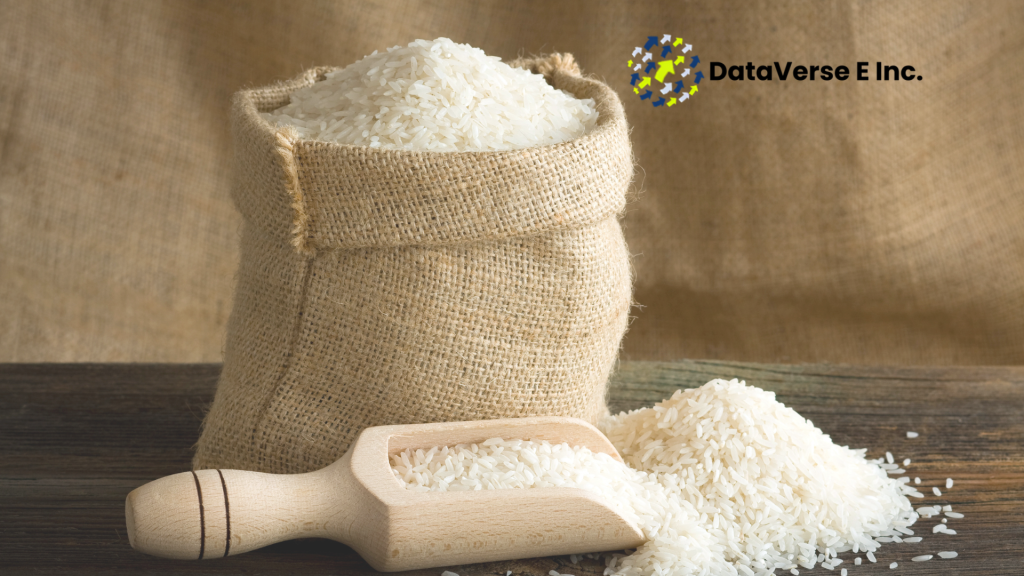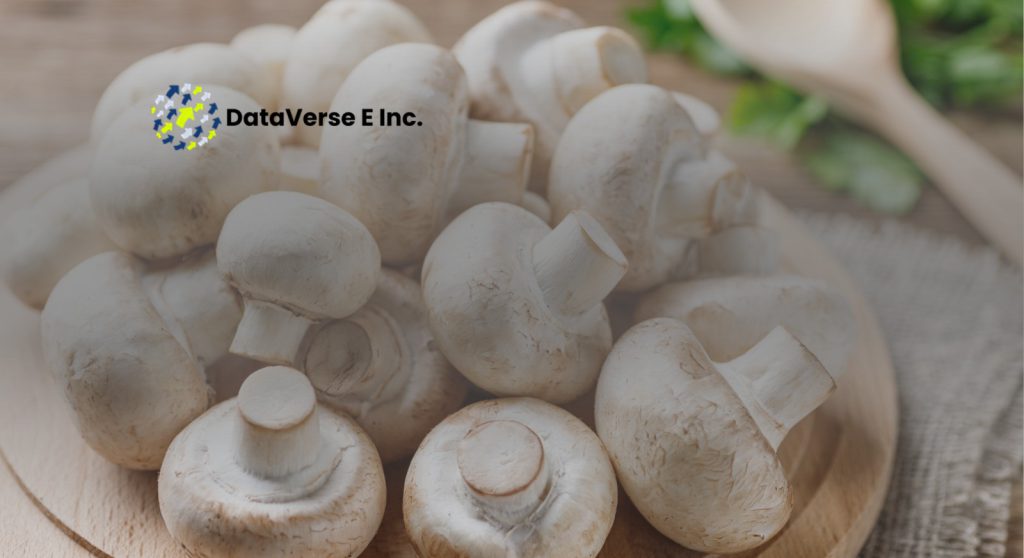Introduction to Indian Textile Machinery Exports
The Indian textile machinery sector plays a crucial role in the global textile landscape, contributing significantly to the country’s economy and employment.
Over the years, India has established itself as a prominent player in the export from India of textile machinery, leveraging its vast manufacturing capabilities and skilled workforce.
The country is recognized for producing a diverse range of machinery, including weaving, spinning, knitting, and finishing equipment.
This has positioned India not only as a leading supplier to domestic industries but also as a significant exporter to international markets.
The current state of Indian textile machinery exports reveals a dynamic sector that is continually evolving to meet the demands of the global market.
As the fashion industry adapts to fast-changing consumer preferences and technological advancements, textile machinery manufacturers are increasingly innovating to enhance efficiency, sustainability, and production quality.
These factors have contributed to an uptick in export from India, particularly to developing regions that are investing in their textile production capabilities.
Understanding the intricacies of Indian textile machinery exports is essential for stakeholders who aim to navigate the complexities of this vital industry.
The upcoming sections will delve into the opportunities and challenges that the sector may encounter as it strives to enhance its position within the global market.
Current Trends in the Textile Machinery Market
The global textile machinery market is currently experiencing significant transformations driven by technological advancements, sustainability initiatives, and changing consumer demands.
As the industry adapts to these trends, Indian manufacturers are strategically positioning themselves to enhance their export from India.
One of the prominent trends reshaping the sector is the integration of automation and smart technology.
The emergence of Industry 4.0 has introduced cutting-edge machinery that incorporates artificial intelligence, IoT, and data analytics, thereby increasing production efficiency and reducing operational costs.
This shift towards automation presents a unique opportunity for Indian textile machinery manufacturers to innovate and meet global standards.
Sustainability practices are another pivotal trend influencing the textile machinery market.
With the growing emphasis on eco-friendly production processes, manufacturers are increasingly adopting sustainable technologies in their machinery design.
This shift not only addresses the environmental concerns associated with textile production but also aligns with international market demands for sustainable goods.
As global consumers become more conscious of their purchasing decisions, Indian exporters must leverage these sustainability practices to enhance their competitive edge in the international market.
Furthermore, shifts in demand due to changing fashion trends and consumer preferences are impacting the textile machinery landscape.
As the market moves towards more personalized and on-demand production methods, Indian manufacturers are adapting their machinery to facilitate quick turnarounds and customization.
This flexibility is vital for responding to dynamic consumer needs and enhancing the potential for export from India.
In summary, the convergence of advancing technologies, a strong focus on sustainability, and evolving consumer preferences are shaping the future of the textile machinery market, creating both challenges and opportunities for Indian exporters in 2024 and beyond.
Opportunities for Indian Textile Machinery Exports in 2024
The landscape of the global textile industry presents a myriad of opportunities for Indian textile machinery exports in 2024.
One of the foremost areas for expansion lies in the burgeoning international markets.
Countries in Southeast Asia, Africa, and Latin America are experiencing significant growth in their apparel sectors, leading to an increased demand for advanced textile machinery.
Indian manufacturers have the chance to establish strong partnerships with local businesses and governments in these regions, providing not only the machinery but also expertise in operational efficiency and sustainability practices.
Innovation in machinery technology is another critical factor that can propel the export from India to new heights.
As global demand shifts towards more sustainable production methods, Indian manufacturers can focus on developing state-of-the-art machinery that aligns with eco-friendly practices.
Innovations such as automated weaving machines, energy-efficient dyeing equipment, and robotic systems for material handling can make Indian textile machinery more attractive to international buyers.
By investing in research and development, Indian exporters can showcase their advancements and strengthen their competitive edge in the global market.
Additionally, government support initiatives play a pivotal role in fostering growth within the textile machinery export sector.
Various schemes and incentives aimed at boosting exports, coupled with policies promoting ease of doing business, create a conducive environment for manufacturers.
The Indian government has been proactive in facilitating trade relationships and participating in international trade fairs, which can offer exporters valuable opportunities to showcase their products and connect with potential buyers.

To effectively capitalize on these opportunities, it is essential for Indian exporters to be agile and responsive to market trends.
By understanding the specific needs of different regions and tailoring their approaches accordingly, Indian textile machinery manufacturers can significantly enhance their global footprint in 2024.
Challenges Faced by Indian Exporters
As Indian textile machinery exporters look towards 2024, several significant challenges will likely shape their operational landscape.
One of the most pressing issues is the increasing competition from global players.
Countries such as China, Germany, and Italy have established themselves as formidable competitors, offering advanced technology at competitive prices.
This competitive pressure not only affects pricing strategies but also compels Indian manufacturers to innovate and enhance their product offerings to maintain their market share in the global arena.
Another challenge is the complex web of export regulations that Indian exporters must navigate.
Compliance with international standards can be cumbersome, requiring exporters to invest in quality assurance and certifications.
The intricacies of tariffs, customs regulations, and trade agreements add another layer of complexity.
Whether it’s ensuring that machinery meets the requirements set by foreign markets or dealing with fluctuating tariff rates, the regulatory environment can present significant hurdles that impact the ease of doing business and the overall export from India.
Logistical issues further compound these challenges. Efficient supply chain management is crucial for timely deliveries, yet Indian exporters often contend with infrastructure deficits.
Transportation bottlenecks, inadequate warehousing facilities, and inefficiencies in port operations can lead to delays and increased costs, undermining exporters’ competitiveness.
Additionally, geopolitical tensions and trade disputes can disrupt logistical channels, further complicating the export process.
Together, these challenges can significantly impact the textile machinery export sector.
Manufacturers must be proactive in addressing these issues to sustain their growth and capitalize on the opportunities that may arise in 2024.
By fostering innovation, adhering to regulatory requirements, and improving logistics, Indian exporters can position themselves to thrive despite the competitive landscape.
Government Policies and Their Impact on Exports
The Indian government plays a crucial role in shaping the landscape of the textile machinery industry through various policies aimed at enhancing the sector’s global competitiveness.
In recent years, initiatives have been implemented to promote the export from India, focusing on reducing trade barriers and simplifying regulations that facilitate smoother transactions for exporters.
The initiatives reflect a commitment to bolster the textile machinery segment, vital for meeting both domestic and international market demands.
To drive this growth, the Ministry of Textiles has introduced several programs designed to support manufacturers and exporters.
Among these is the Production-Linked Incentive (PLI) scheme, which incentivizes manufacturers based on their level of output and export performance.
This scheme not only encourages investment in advanced technologies but also aligns the production capabilities with international standards, thus enhancing the capacity to export from India.
Furthermore, the government has established strategic partnerships with various countries, ensuring collaborative efforts that leverage shared technology and market access.
Research and development (R&D) support is another focal point of current policies. The government recognizes that innovation is key to sustaining growth in the textile machinery industry.
By providing grants and funding for R&D initiatives, authorities aim to foster innovation, enabling manufacturers to develop more efficient and sustainable machinery.
This approach also addresses challenges such as competition from lower-cost producers globally and the need to transition to eco-friendly production methods.
As a result, the Indian textile machinery sector is likely to experience significant advancements, positioning itself favorably for exports in the upcoming years.
Collectively, these government initiatives underscore a robust framework designed to enhance the capabilities of the Indian textile machinery sector, paving the way for increased export potential and addressing the evolving needs of the global market.
Technological Innovations Shaping the Future
The Indian textile machinery industry is experiencing a significant transformation due to technological innovations that are redefining the landscape of manufacturing processes.
As the demand for higher efficiency and productivity increases globally, the integration of automation, artificial intelligence (AI), and the Internet of Things (IoT) is becoming crucial for Indian manufacturers aiming to enhance their competitiveness in the export market.
Automation plays a pivotal role in streamlining production lines, reducing human error, and increasing output rates.
With the advent of advanced robotics and automated machinery, companies can significantly lower operational costs and enhance precision in textile manufacturing.
This technological adoption not only boosts efficiency but also allows exporters to meet international quality standards, making them more attractive to global buyers.
Moreover, such innovations pave the way for reduced lead times, enabling quicker responses to market demands.
Artificial intelligence further augments these developments by facilitating predictive analytics, optimizing resource allocation, and enhancing decision-making processes.
By leveraging AI, textile manufacturers can analyze production data in real-time, identify inefficiencies, and implement corrective measures promptly.
This capability is critical for Indian exporters looking to compete in a fast-paced global market, ensuring they remain agile and responsive to changing consumer preferences.
The integration of IoT technology allows machinery to communicate data seamlessly, leading to smarter manufacturing processes.
Sensors embedded in textile machines provide valuable insights into equipment performance, leading to predictive maintenance and reduced downtime.
This aspect of IoT not only ensures maximum operational efficiency but also contributes significantly to sustainability efforts by minimizing waste generation.
In summary, technological innovations such as automation, AI, and IoT are reshaping the Indian textile machinery sector.
As these technologies advance, they provide Indian exporters with the necessary tools to enhance their manufacturing processes, ultimately positioning them favorably in the competitive landscape of global textile exports.
The Role of Sustainability in the Textile Industry
Sustainability has become a cornerstone of the textile industry, significantly influencing the export landscape from India.
As global awareness regarding environmental concerns rises, there is an increasing demand for eco-friendly practices within textile manufacturing and machinery.
Indian exporters are recognizing that sustainability is not merely a trend but a necessary approach to remain competitive in the international market.
Buyers are now more inclined to seek suppliers who prioritize sustainability in their operations, production methods, and the materials they use.
Incorporating sustainable practices allows textile machinery manufacturers in India to appeal to a conscientious consumer base that values environmental responsibility.
Innovations such as water-efficient dyeing processes and energy-saving machinery are becoming essential offerings that align with sustainable goals.
By focusing on sustainable technologies, Indian exporters can enhance their product reputation and meet growing international regulations regarding environmental standards.
This not only aids in securing a wider market reach but also forges stronger business relationships based on shared values of sustainability.
Moreover, the shift towards sustainability is accompanied by significant environmental implications.
The textile industry is one of the largest polluters globally, contributing to issues such as water scarcity, chemical runoff, and excessive waste.
By embracing sustainable practices, Indian exporters can mitigate these impacts, leading to more responsible production cycles. This transformation reflects a conscious effort to reduce the ecological footprint and conserve resources.
Reporting on sustainability efforts can further strengthen brand image, establishing Indian textile machinery as a leader in eco-friendly innovations.
Consequently, the integration of sustainability into the textile machinery export strategy not only meets market demands but also underscores a commitment to environmental stewardship.
As we move forward, the importance of adopting eco-friendly practices will shape the future trajectory of textile exports from India, positioning the nation favorably on the global stage.
Case Studies of Successful Indian Exporters
The Indian textile machinery export sector has shown remarkable resilience and adaptability in recent years, overcoming various market challenges while seizing new opportunities.
One such successful exporter is XYZ Engineering, which has firmly established itself in international markets by implementing comprehensive quality control measures.
By enhancing their manufacturing processes to align with global standards, XYZ Engineering has managed to reduce product defects and improve customer satisfaction.
Their focus on innovation and research and development has also allowed them to offer an array of technologically advanced machinery, catering to the specific needs of their clients worldwide.
Another noteworthy case is ABC Looms, which specializes in producing high-speed weaving machines.
ABC Looms faced stiff competition from foreign players initially but turned this challenge into an opportunity by leveraging digital marketing strategies.
By reaching out to potential clients through online platforms, they successfully expanded their market base and built a strong brand presence in countries such as Bangladesh and Vietnam.
Their commitment to offering customized solutions and after-sales support has further solidified their reputation, leading to long-term relationships with numerous clients.
Furthermore, DEF Textiles exemplifies successful navigation through regulatory challenges.
This company invested significantly in understanding international trade regulations and compliance requirements associated with exporting textile machinery.
By maintaining transparency and fostering good relationships with customs officials, DEF Textiles significantly reduced delays and complications in their export processes.
The strategic collaborations with overseas distributors also facilitated smooth entry into challenging markets, proving beneficial in enhancing their export from India.
These case studies highlight best practices and innovative strategies employed by Indian textile machinery exporters.
By focusing on quality, digital presence, and regulatory compliance, they have not only achieved success but have also paved the way for other exporters aiming to thrive in the competitive global landscape.
Future Outlook for 2024 and Beyond
The future of export from India, particularly in the textile machinery sector, presents a landscape characterized by both promising growth opportunities and formidable challenges.
As we look toward 2024 and beyond, several key trends are likely to shape the trajectory of this industry.
The Indian textile machinery export market could witness considerable expansion, driven by increasing global demand for sustainable and technologically advanced textile solutions.
One of the primary growth factors will be the shift towards modernization in developing regions, where manufacturers are increasingly seeking efficient machinery to enhance productivity.
The Indian textile machinery sector has the potential to establish itself as a leader in this domain, given the ongoing innovations in automation and eco-friendly production methods.
This aligns with the growing global emphasis on sustainability, which offers Indian manufacturers a competitive edge in attracting international buyers focused on environmentally responsible practices.
Further, the government’s initiatives aimed at boosting the ‘Make in India’ campaign are expected to facilitate an increase in textile machinery export from India.
By promoting local manufacturing and incentivizing exports, policymakers are creating a conducive environment for growth.
Moreover, collaboration with international technology providers could enhance the innovation and quality of Indian textile machinery, making it more appealing to overseas markets.
However, challenges persist. Competition from established textile machinery manufacturers in countries like China and Germany remains significant, and Indian exporters must differentiate their offerings to gain market share.
Moreover, fluctuations in raw material prices and supply chain disruptions may pose risks to manufacturers, potentially impacting their ability to meet global demand effectively.
In conclusion, the outlook for Indian textile machinery exports in 2024 hinges on how well the sector can leverage emerging opportunities while navigating inherent challenges.
By focusing on innovation, sustainability, and strategic international partnerships, export from India could see substantial growth, reinforcing its position in the global textile machinery market.






No comment yet, add your voice below!